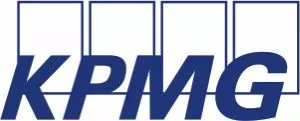On 28 February 2024, the President issued the Executive Order No 40 (Oil and Gas Companies (Tax Incentives, Exemptions, Remission etc.) to unlock investment in the gas sector. The Order provides for gas credit/allowance for Non-Associated Gas (NAG) greenfield developments in the onshore and shallow waters and gas utilisation investment allowance for midstream projects. Please click this link for our Newsletter on this matter.
Further to the Order, the Federal Inland Revenue Service (FIRS) has issued two information circulars to guide taxpayers on the implementation of the provisions of the Order. Having reviewed the two circulars, we believe that they reflect the letter and the spirit of the Order except for the following matters:
1 Midstream Gas Utilization Incentive Allowance
As far as the FIRS is concerned, midstream gas companies will only be entitled to the 25% allowance specified in the Order. The FIRS' position may be hinged on the qualification 'downstream operations' attached to the gas incentives stated in Section 39 of the Companies Income Tax Act (CITA) as amended. In their view, the new allowance should only apply to midstream gas projects while the 15% allowance stipulated in Section 39 will apply to downstream gas projects. However, the question is whether this is the intent of the Order given that it does not specifically repeal the CITA provision.
Prior to the issuance of the Order, midstream gas projects had been claiming the tax incentives in section 39 and the FIRS had accepted this as a correct practice. In addition, the definition of gas utilisation in section 39 seems to cover midstream projects when it refers to gas utilisation as ‘the marketing and distribution of natural gas for commercial purpose'.
Paragraph 9 (2) of Order No 40 specifically states that the capital allowances applicable under CITA will continue to apply without prejudice to other allowances, deductions and incentives that are available in CITA.
Of course, there is the issue of whether, with the provision of Order 40 on midstream gas projects, section 39 is no longer meant to apply given the specific qualification of ‘downstream operations' in section 39. As already discussed, the general convention prior to the enactment of the Petroleum Industry Act was that midstream activities had always formed part of downstream operations. Hence, the reason the FIRS never challenged this convention and practice.
It is, therefore, important that the relevant legislation clarify explicitly and expressly the position of the law considering that the intent of Order No 40 is to incentivise gas utilisation in the country.
2 Calculation of Gas Credit/ 2 Allowance for NAG Projects
The Order provides that NAG Projects will be entitled to gas tax credit if delivered by 1 January 2029 and provided the hydrocarbon liquid content (HLC) is less than thirty (30) barrels per million-cubic feet of gas. The credit will become tax allowance after 10 years. However, where the HLC is higher than thirty (30) barrels but less than hundred (100) barrels, such project will be entitled to gas allowance. The Order provides for a rate of USD1.00 per thousand-cubic feet or 30% of fiscal price, whichever is lower. In respect of the allowance, the lower of USD0.50 per thousand-cubic feet and 30% of fiscal price will be applicable.
However, in the FIRS' illustrations provided in their circular, we note an error in the calculations. The FIRS erroneously divided the production quantity stated in mscf by 1,000 before applying the relevant rate. The correct interpretation is that the rate should be applied directly since the production used in the illustrative examples is stated in mscf. However, where the relevant production is stated in standard cubic feet, then the value should be divided by 1,000. We, therefore, urge the FIRS to review their illustrative calculations and correct the error.
Notwithstanding the above, we must commend the FIRS for proactively issuing the circulars to provide their position on the Order. However, we hope that the FIRS will review their positions speedily considering the two matters discussed above. As the Courts have already held, information circulars issued by tax authorities are not binding but are designed to provide guidance to taxpayers. So, taxpayers are at liberty to challenge any position that does not align with their interpretation.
The opinion expressed in this article is solely personal and does not represent the views of any organization or association to which the authors belong.


